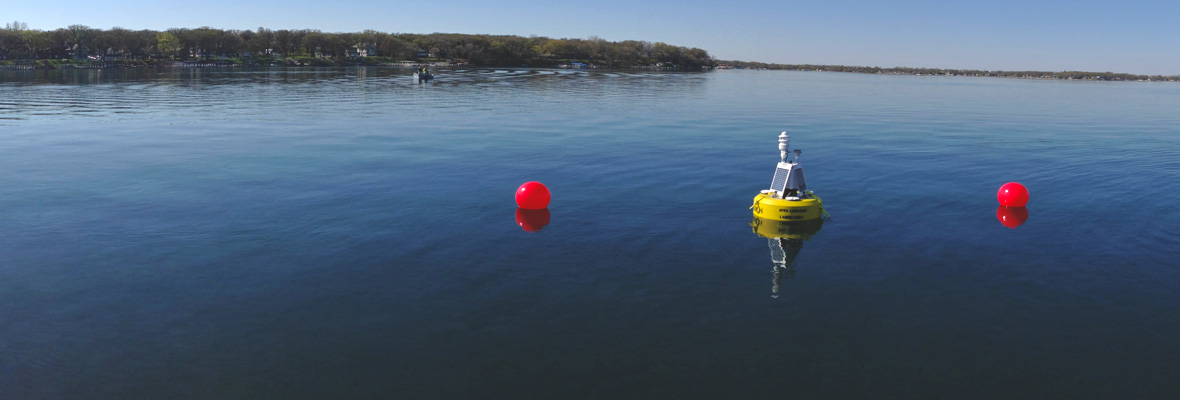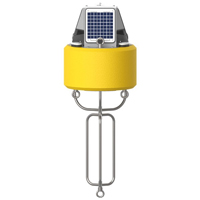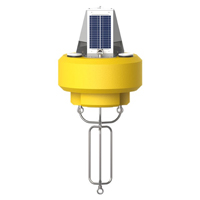Limnological and water quality data is essential to the work of freshwater ecologists, civil engineers, water managers, and many others. This type of data plays a critical part in artificial wetland construction, wildlife habitat protection, fish and game policymaking, lake and reservoir management, and decisions that control water use and distribution.
In this post, we will discuss how to monitor water quality and collect limnology data with lake buoys, the kinds of things that type of buoy can do, and how it can be customized.
Lake Buoys Equipped With Advanced Sensors
Lake buoys equipped with advanced sensors allow researchers to detect and record limnological signals. These are signs lakes provide as they react to the ways that the climate and watershed around them change or fluctuate. Lake buoys with advanced sensor strings that collect reliable data on a range of water transparency parameters in real-time are important to this work.
Lake buoys designed to sample water at various depths can measure subtle changes in lakes. This kind of sampling creates a detailed “profile” of the lake’s health using a sensor suite that captures data all the way from the lake’s surface to its bottom. These kinds of sensors measure chlorophyll, dissolved organic carbon (DOC), lake transparency, and other parameters, which help researchers understand how changes in these watershed variables can contribute to oxygen depletion and dead zones, and the formation of harmful algal blooms (HABs).
Sensor strings are just as important to the systems surrounding these lake buoys. These include dissolved oxygen, photosynthetically active radiation (PAR), and temperature sensors. The strings can be deployed all year long, even during the winter beneath the ice, for reliable data on phenomena such as how low-oxygen conditions start and progress, and thermal stratification.
It is possible to deploy lake buoys and advanced sensors even in remote locations that remain relatively untouched by human activity. This is a critical consideration, especially when conservation is a priority, and can be met with smaller, custom models.
Water Transparency and Marine Life
Water transparency is important to fish, phytoplankton, and zooplankton. Phytoplankton demand light for photosynthesis, although UV light can actually inhibit it. And zooplankton actually move through the water column reacting to light as well as food and predators, and short-wavelength radiation can harm them, forcing migration.
Changes in zooplankton and phytoplankton lake communities over time can trigger increases in both dissolved organic matter (DOM) and pH. However, there is no one way that water transparency and other factors affect these species, and limnological data from lake buoys reveal that some species decline as transparency decreases, while others increase.
Lakes across the country are experiencing HABs, some for the first time, causing recreational managers to place limits on their use. In some cases, people living near these lakes with HABs experience deleterious health effects. Of course, excess nutrients in lakes can contribute to these blooms, but they are complex phenomena, and increases in DOM that decrease transparency may also help cause HABs.
Some limnological research indicates that exposure to UV radiation can change larval development. This means that, as transparency in a lake changes, species that are UV-sensitive may be dissuaded from invading a clear lake—or forced to.
Fish are largely visual predators, and to enable them to catch their prey, their impressively powerful eyes demand at least a small amount of visible light. As transparency falls, some predators are less able to feed, but they are also safer from their own enemies. In some lakes, increases in pH and DOM have caused increases in fish predators—and maintaining a balance is a challenge for managers and scientists that demands ongoing study.
Lake Buoys for Monitoring Water Quality and Collecting Limnological Data
Obviously, there is a tremendous range of factors that can affect the health of a lake. That’s why it is so important to have the right lake buoy in place to monitor water quality parameters and collect the limnological data your project requires. Which buoy is right depends on many factors, including the size and location of the lake, the project requirements, the telemetry needs, deployment abilities, and budget.
The NexSens CB-450 is an excellent choice for a large number of lakes. This lake buoy is versatile, with the ability to support a wide range of limnological research, weather monitoring, dredge turbidity monitoring, and other applications. It’s also easy to deploy—all you need is a small boat to get the job done.
The CB-450 is a plug and play option, allowing you to customize the system to your requirements. Use this lake buoy equipped to measure chlorophyll, dissolved organic carbon (DOC), dissolved oxygen, lake transparency, photosynthetically active radiation (PAR), temperature, and other parameters, to create a detailed “profile” of your lake’s health from the surface to bottom.
A more compact option for smaller bodies of water, or shorter deployments needing less detailed data is the NexSens CB-150. This lake buoy supports low-power and compact sensors handily and is even easier to deploy, with a fully-configured system usually weighing in at less than 100 pounds. And despite this lake buoy’s smaller size, you can still collect real-time data with this option.
To learn more about the best way to monitor water quality and collect limnological data with a lake buoy for your project, reach out to the NexSens/Fondriest team. Our experienced crew can help you make sure you’ve got the best option and the highest quality, most reliable data.
Equipment
The NexSens CB-150 Data Buoy is designed for deployment in lakes, rivers, coastal waters, harbors, estuaries and other freshwater or marine environments.
The NexSens CB-450 Data Buoy is designed for deployment in lakes, rivers, coastal waters, harbors, estuaries and other freshwater or marine environments.
WQData LIVE is a web-based project management service that allows users 24/7 instant access to data collected from remote telemetry systems.





0 comments